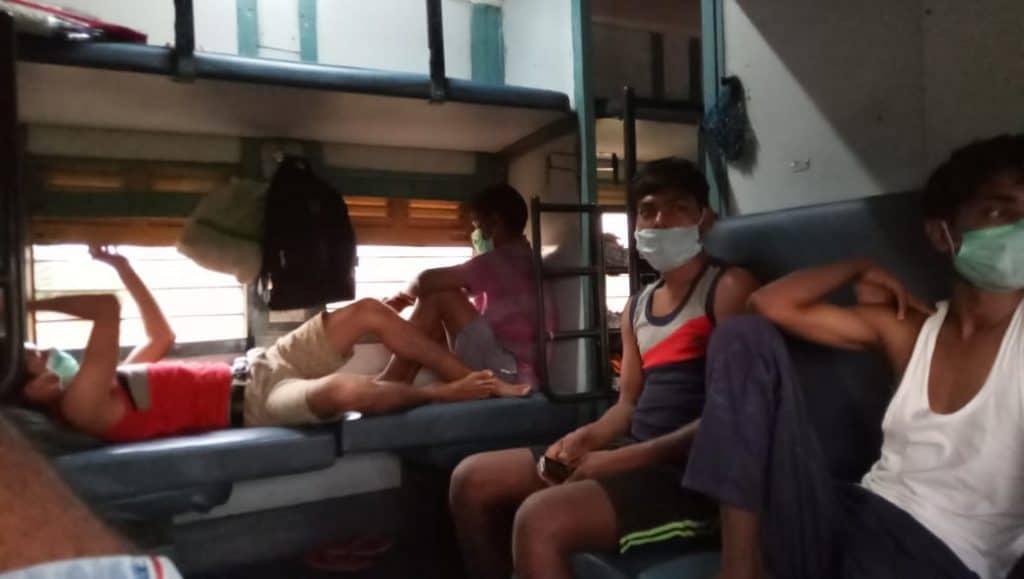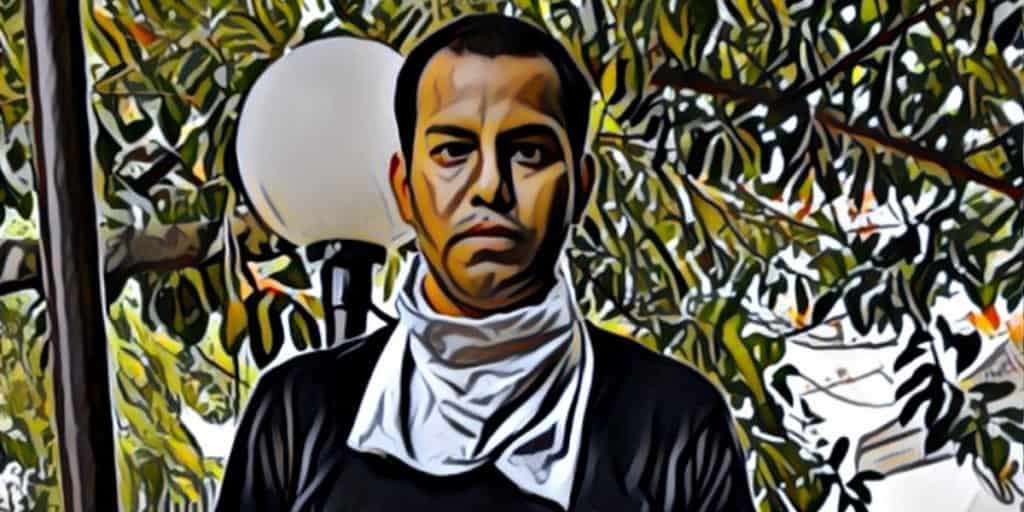They left their villages so that their families would have one mouth less to feed. With their meagre incomes in the big city, they gave themselves the bare necessities: food, clothing and a roof above their head. The rest of their earnings went to their families in their distant towns and villages.
It was no great life. But the cash — however small — came regularly. Their families back home could eat regularly; perhaps, a sibling could now go to college; may be, their mother could secretly save and pay off an old debt. They could not have asked for more. They only hoped it wouldn’t get worse. But it did…
And when it did, it was their families in those distant and impoverished towns and villages, that sent them survival money.
Role reversal
Chandrappa’s desperate plea to his childhood friend in Raichur for a mere Rs 50, and the latter’s reluctance to help him was the lowest moment in his life. He had resigned to fate when his relatives refused him the loan, but his friend’s reluctance broke him.
Chandrappa, a cab driver is in his late to 30s, left Raichur and his existence as a landless labourer, more than a decade ago. Here, he married Lakshmi, had two children, and lives in a rented house in Bannerghatta.
“My wife and I are surviving eating mandakki (puffed rice),” said Chandrappa.
“My wife and I are surviving eating mandakki (puffed rice) for the last couple of days. The government-issued ration is exhausted. We already owe Rs. 6,000 to our retailer and have no face to go back. It was under this condition I was begging for help from my old friend,” explained Chandrappa.
Although the phone call ended on a sour note, the friend sent him a sum of Rs. 100 on GooglePay soon after. Almost simultaneously, he also sent Chandrappa a message, asking him not to bother about returning the money since he understood the latter’s circumstance. The friend also pleaded that Chandrappa not ask for more as he was close to starvation himself, in the village.

Returning to their village is not an option for Lakshmi and Chandrappa, who don’t want to discontinue their children’s education in the city. Lakshmi fears losing her employment the moment she absents herself from work. Chandrappa does not own land and has never been a farmer. So, it is pointless to return to Raichur.
Lakshmi is angry and embarrassed that she asked her parents for money. “What else do I do to meet the expenses? Once things improve, I have assured them that it will be returned,” she said.
Ever since the lockdown, the three households where Lakshmi was employed as a cook, have discontinued her services. Thankfully, one of them advanced her two months’ pay of Rs 6,000. With two children in their early teens to support, Lakshmi and Chandrappa are saddled with a Rs 50,000 chit-fund loan.
Breadwinners losing the battle
Employed for years, many daily wagers regard Bengaluru as their home. A substantial chunk of their wages are routinely remitted to their families living in villages and towns. With their jobs, wages and savings axed by the lockdown, they are now burdened by EMIs, rent, outstanding grocery bills, day-to-day expenses and other domestic commitments.
With basic survival at stake, they are looking homeward, triggering a reverse migration crisis. Others are surviving on hope and being pushed into a debt trap. Many are making ends meet with informal borrowing and some are staying afloat, thanks to reverse remittance.
Vijay Kumar (name changed), a garment factory worker in Electronics city, hung on in Bengaluru despite his employer delaying wages by a whole month, thanks to reverse remittance. “When we ran out of money, we had no choice but to shamelessly ask for assistance from back home and we managed to arrange Rs 10,000 that way,” he says.
Vijay has been working in Bengaluru for the past 8 years. He lives in a hostel accommodation provided by the company with 100 other migrant workers from states like Bihar, Jharkhand, Orissa and Chattisgarh.
Apart from the financial issues, his fellow workers began falling sick with diarrhoea-like symptoms after their management ignored complains of a foul smell in the water supplied at the hostel. As workers began falling ill and had to be hospitalised, they also started receiving threats from locals, who suspected them of having contracted Covid.
Several surveys had cautioned policy makers on the impact of the lockdown on unemployment and incomes of urban migrants. Even the latest such report from Azim Premji University, presented on May 12, gauged and quantified the immense economic hardship reported across the country.
APU Survey Highlights:
- Two-Thirds (67%) of workers lost their jobs. Urban India is more severely affected. 8 in 10 workers in urban areas (80%) and almost 6 out of 10 workers in rural areas (57%) lost their jobs.
- For non-agricultural self-employed workers who were still employed, average weekly earnings fell from Rs. 2240 to Rs. 218 (a fall of 90%).
- For casual workers who were still employed, average weekly earnings fell almost in half from Rs. 940 in February to Rs. 495 during the lockdown.
- Half of all salaried workers (51%) saw either a reduction in their salary or received no salary.
- Half (49%) of households reported that they did not have enough money to buy even a week’s worth of essential items.
Workmen like Vikas Rana, who do casual work as carpenters and repairmen, were completely cut-off from their Rs. 350 daily wage, after the Janata Curfew on March 22.
“Usually we sent Rs. 2000 – Rs. 4000 from our salary. But post lockdown, with no income whatsoever, we were sometimes reduced to eating one meal a day,” said Vikas, who had come to Bengaluru eight years ago from Koderma in Jharkhand.
Many families from Jharkhand had to send money to their bread-winners in Bengaluru. Some workers also reported receiving Rs. 1,000 from their state governments as relief. But these amounts weren’t enough to meet even their most basic needs — food, mobile recharge and return journey.
Yet none of these workers wanted to formally complain nor confront their employers for arrears.
“At times, we have even drunk just water for dinner and somehow managed to survive till now. But if I go to the police or fight my employers for arrears or salary, I will lose my job,” said Deepa, a cook, still hoping her employers will understand the suffering she and her children go through and pay her.

“As we all did not have money, with our pooled savings, only five of us could afford the train journey home. Six others elected to stay back and are still stuck,” says Vikas Rana.
The debt trap
In the absence of fixed assets, daily-wagers like B V Govindraj, a 51-year-old autorickshaw driver, could not dream of approaching a bank for a personal loan. “The people who give hand loans charge their own (interest) rates, but given our condition we don’t have any option but to pay whatever interest is demanded,” he says.
Govindaraj’s wife supplements the family income with her tailoring, but the money is never enough for a family of six, that includes Govindaraj’s 70-year-old diabetic mother, two daughters pursuing graduation and the twins in pre-university. Apart from the daily household expenses, they have to pay rent and buy diabetes medicine for both himself and his mother.
Another autorickshaw driver Manjunath (54) said that he has already pledged his two gold rings with a local ‘seth’ (pawn broker or money lender) to meet his household expenses, and is reduced to taking hand loans from friends. The only earning member, he has an 18-year-old son and a daughter who has completed her MBA and is yet to find a job.
See also: Bengaluru’s poor, now out of cash, want pawn shops reopened
For mortgage-free lending of Rs. 500, Rs. 1000 or above, local moneylenders charge anywhere between 2% to 5% as monthly interest.
Drivers of autorickshaws and cabs are particularly agitated that the Karnataka government’s announcement of the Rs 5,000 direct transfer — as compensation for the lockdown — is ineffective. “It’s more than 15 days now. The Seva Sindhu app is dysfunctional; there is no information on how to register and the manner of getting compensation; whether drivers who don’t own the cars will get any compensation etc. There is complete lack of clarity,” Manjunath said.
In the backdrop of delay in the distribution of the compensation amount, autorickshaw and cab drivers held a mock funeral of the scheme at the transport commissioner’s office at Shantinagara, in May.
Staring at homelessness
Several wage earners have started getting feelers from their landlords to pay monthly rent. While a few landlords are apparently adjusting rent amounts against the advance, others are asking for half the rent amount.
Ram Kumar (name changed), a plumber from Kendrapara in Orissa, is worried that his landlord might ask him to vacate his house in Kudlu village, as he has not paid his rent for the past two months. Between them, his wife and he used to manage earning between Rs. 10,000 – Rs 30,000. But having lost their jobs, the family finds itself unable to pay the Rs. 6000 per month.

“We don’t know when the landlord will ask us to vacate. We were thrown out of the ration shop line. I can’t send money to my parents. There is no real care or concern for the poor. It is just for show. Nothing works,” says Ram Kumar.
Ram Kumar, who came to the city two decades ago, has been ferrying those desperate to return home, to and from the local police station. Many, he says, said they had paid small bribes to the police, only to be ultimately dismissed or referred to elsewhere.
No silver lining
While the government reportedly has hinted that people should brace and transform for a different kind of economy, the lack of long term clarity has left many confused.
Santosh Kumar Sahu from Kolkata a worker at a pub in Indiranagar is more positive than many others, “Our employers are very nice to us and have helped us a lot during this time. We understand that we cannot be on their payroll if they are not allowed to function.”

Santosh said they were debating on whether to go back right now, “Some of us feel that trains will be very overcrowded, initially, and hence there would be a lot of risks. Others want to go back. Like me, some others want to stay back and find a way to make some money through a temp job.” In his four years in the city, Santosh has worked in several pubs. Santosh is more optimistic than many, and believes something will work out, “We are proud and hard-working people.”
Santosh has the highest regard for the government which, he says, has effectively mitigated the impact of COVID-19. But he acknowledges, “The government has been enthusiastic in rescuing Indians stuck abroad but lazy when it comes to internal migrants.”
In Part 2 of this series, we look at the food insecurity and hunger that haunted Bengaluru’s poor working class during the lockdown.
This article was part of the Ground Reality series that looked at the impact of the COVID lockdown on informal sector workers. This project was supported by IIM Bangalore. Read the rest of the series here.
When it will happen that every Indian gets daily square meals and other basic health necessities without any problem or hindrance? When this will be happened in our country? How the basic necessities of every human being be made available so that no one died on starvation or without medication?
I think there is no greater tragedy to parent than telling our small children that there is no more rice to cook